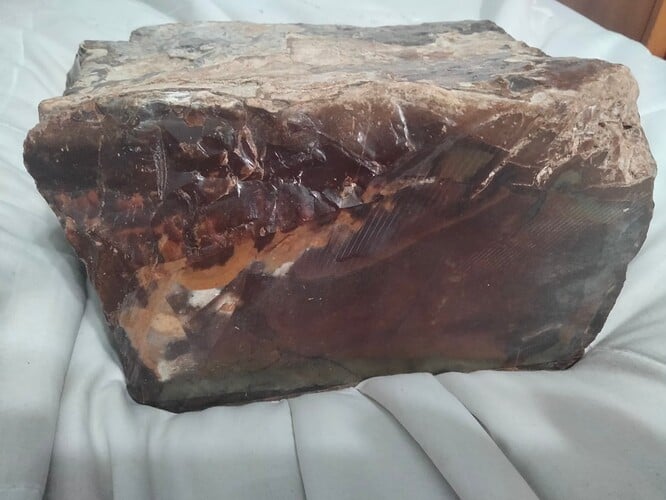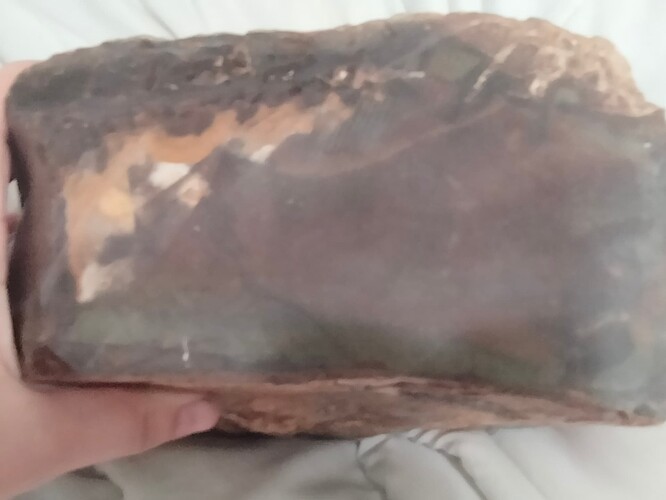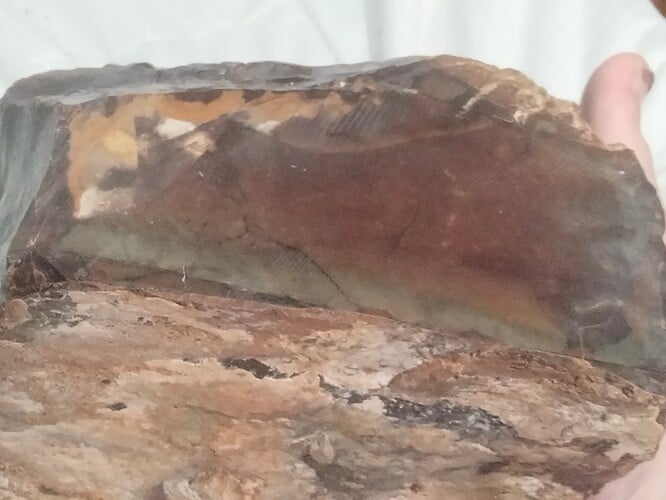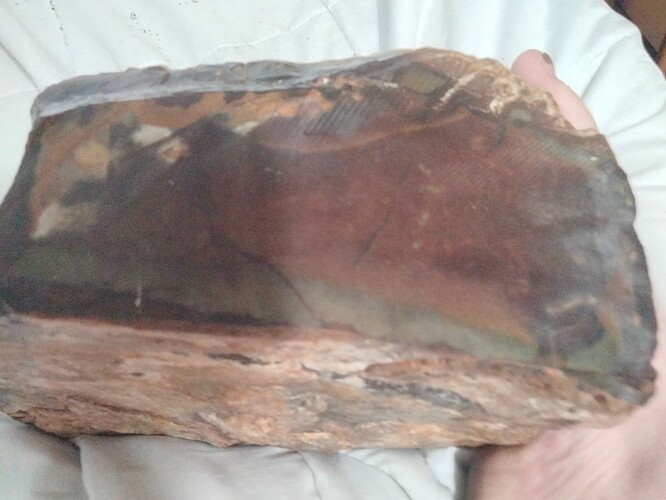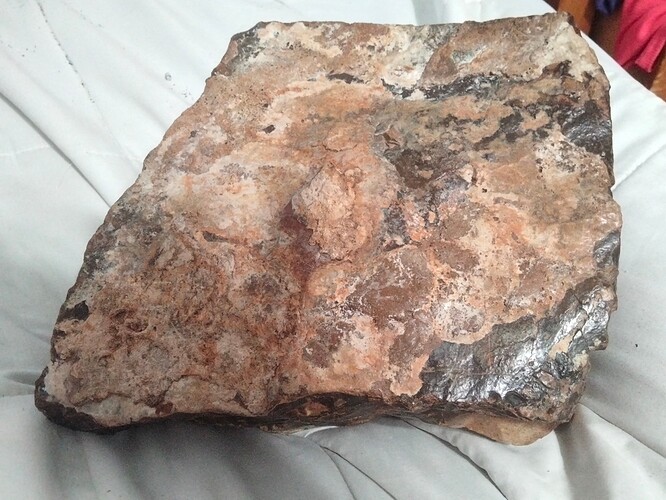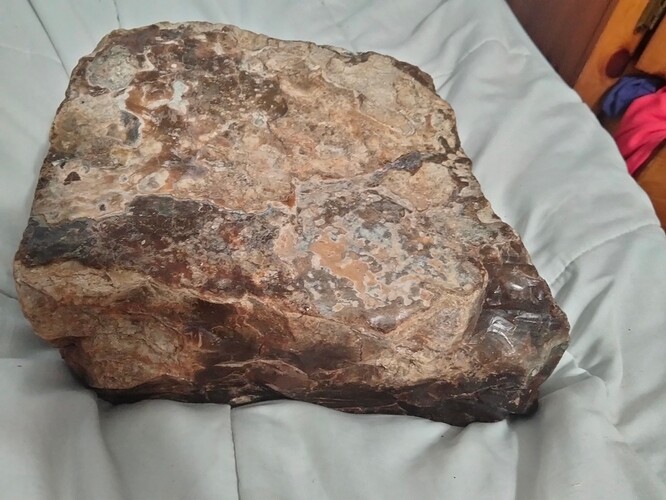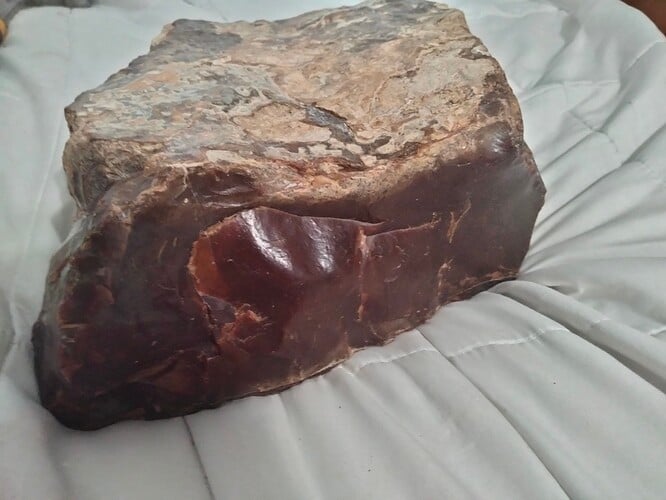Hi I have a rock from etsy. It was sold to me as a opal. He said he bought it from his friend. Someone in his friend’s family passed and the person who sold it to me thought it was a opal. I am unsure what is is. If you look into the stone it seems to have a translucent pattern around the stone. Meaning a pattern in the stone below the surface of the stone. Does anyone have any idea of what this could be? It looks pretty! It is 20 something pounds. If you were to make something like jewelry with it. What would the value of it be? Thanks
Possibly its a Violet Purple Sapphire. Why not test it for being Corundum ?
Hi Jennifer,
Are you the same Jennifer the one asking for a value of twinned maui garnet?
If so then first of all please consider stepping down from the word ‘value’… it is not the first approach, if at all, in ‘evaluating’ things.
Reminds me of an opal seller, saying the value of opal isn’t determined by what you have payed for it, but by how much you dídn’t pay ![]()
Speaking about this one: to me indeed it looks like opal. Common brown potch opal: it has a distinct way of fracturing, producing those shell-like patterns where it has flaked off. As seen in the photo.
The value: can produce a large number of cabochon cut stones. Potch opal though is considered low value, so cutting doesn’t add much compaired to the cost of cutting. Second point is whether it is stable enough and won’t break up later on (because of something which is called crazing: breaking up all by itself due to internal stress). If you don’t know or in fact it is suspected to be unstable, than you can’t sell the cut stones.
A good indicator of stability is the field of origin: whether it is known to produce good opal. Another one is a low angle in the shell-like edges of fractures, which is less likely to occur in unstable opal (big angle, up to 90 degrees: not stable)
If you can’t tell in advance whether it is stable, than it is considered specimen grade. And if expected value won’t exceed the cost for cutting, than the answer must be the same.
Hope this will help.
Best regards,
Erik
Hi Jennifer,
Good day again! First of all: having read my first answer, I must apologize. It can be interpreted as being somewhat aggressive about the ‘value’ thing.
I can well understand you being thrilled about the beauty of stones and at that point sites like etsy and ebay are kind of internet mines where one can spend hours searching for nice specimens. I hope you have a chance doing the same in real life! It can be even more exciting.
Back to the subject: there are some features which might give you a better answer on the stone you got.
First of all according to its history it should be out of the ground for a long time, so it must stable and it shows the shell-like fractures too. Still it can be considered to be specimen grade.
Though… it being big you can have it carved into any figurine yóu like or it might be used for flint-knapping and produce some nice arrow heads. You might even decide to use just part of it for that purpose. Then you would have both the original ánd some nice craftwork coming out of it, plús the stone coming with a story to tell.
Value: as in something of your own, yóur story to tell.
Enjoy!
Erik
I could classify this as a brown opal mostly probably? In some spots it looked orange and greenish to me. What kind of opal should I classify this as? I am guessing a common opal. I was stumped by that. Thanks. Now I know it is opal for sure! Thanks
Thanks. You’re correct !
Tom C
